Java Software Solutions: Foundations of Program Design, 7th Edition
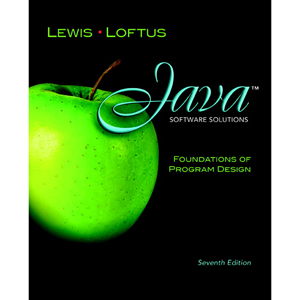
Java Software Solutions teaches a foundation of programming techniques to foster well-designed object-oriented software. Heralded for its integration of small and large realistic examples, this worldwide best-selling text emphasizes building solid problem-solving and design skills to write high-quality programs.
Hallmark features of the Lewis series
- Introduces a software methodology early and revisits it throughout to ensure that students build sound program-development skills
- Includes numerous programming examples, both small and large, that include the program output, sample run, or screenshot display
- Provides a wealth of end-of-chapter programming projects, varying in difficulty level, so students can practice their design skills and implementation of Java programs
Cornerstones of the text
- A measured approach to objects first teaches students to use objects before learning to write them. Students see objects in Chapter three (before control structures), and then build their own objects in Chapter five (after control structures).
- Sound programming practices teach students how to write good software, not just how to program. Through examples and discussions, students learn how to solve problems and implement solutions using foundational software-engineering techniques.
- Fully implemented examples demonstrate specific concepts. Because students learn best through examples, small, readily understandable examples are intertwined with larger, more realistic ones.
- Graphics and GUIs are excellent examples of object orientation—and excellent motivators for students. An optional Graphics Track section covers graphics and GUIs at the end of each chapter, allowing for flexibility of coverage.
Chapter features
- Each chapter begins with a list of Chapter Objectives and a short introduction to the chapter topics to orient students.
- Key Concepts highlight fundamental ideas and important guidelines throughout the chapter and are summarized in the end-of-chapter material.
- All programming examples are presented in clearly labeled listings. The code is colored to visually distinguish comments and reserved words, and followed by the program output, a sample run, or a screenshot where appropriate.
- Syntactic elements of the Java language are discussed in special highlighted syntax diagram sections. Diagrams clearly identify the valid forms for a statement or construct.
Review materials
- The Key Concepts presented throughout the chapter are summarized at the end.
- Short-answer Self-Review Questions review fundamental ideas and terms. Answers are provided at the end of the problem sets.
- Probing Exercises require computations and/or the analysis or writing of code fragments. While they may deal with code, these exercises generally do not require any online activity.
- Programming Projects require the design and implementation of Java programs.
- VideoNotes, created by author John Lewis, provide extra examples and demonstrate how to solve problems. Icons throughout the text and a complete index of the videos on the inside covers indicate where a VideoNote accompanies a particular chapter topic or an end-of-chapter Programming Project. The Video Notes are available to instructors and students on a companion web site.
Table of Contents
Chapter 1. Introduction
Chapter 2. Data and Expressions
Chapter 3. Using Classes and Objects
Chapter 4. Writing Classes
Chapter 5. Conditionals and Loops
Chapter 6. More Conditionals and Loops
Chapter 7. Object-Oriented Design
Chapter 8. Arrays
Chapter 9. Inheritance
Chapter 10. Polymorphism
Chapter 11. Exceptions
Chapter 12. Recursion
Chapter 13. Collections
Appendix A. Glossary
Appendix B. Number Systems
Appendix C. The Unicode Character Set
Appendix D. Java Operators
Appendix E. Java Modifiers
Appendix F. Java Coding Guidelines
Appendix G. Java Applets
Appendix H. Regular Expressions
Appendix I. Javadoc Documentation Generator
Appendix J. The PaintBox Project
Appendix K. GUI Events
Appendix L. Java Syntax
Appendix M. The Java Class Library
Appendix N. Answers to Self-Review Questions
Index
Book Details
- Paperback: 832 pages
- Publisher: Addison Wesley; 7th Edition (March 2011)
- Language: English
- ISBN-10: 0132149184
- ISBN-13: 978-0132149181
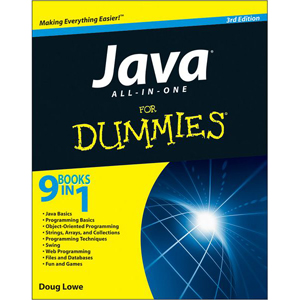
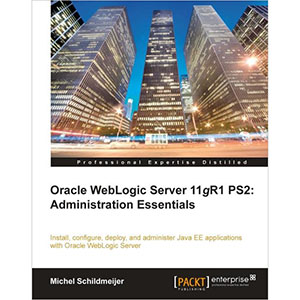
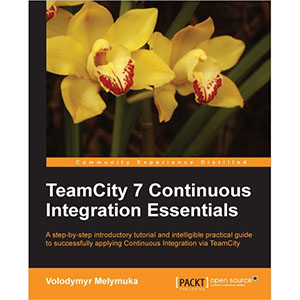
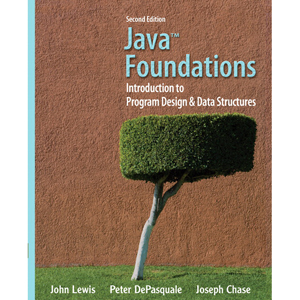
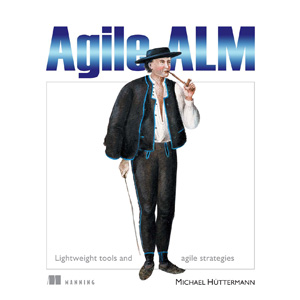










The link points to the newly added C++ book!
The E-Book links are wrong. They refer to Addison.Wesley.Starting.Out.with.CPP.7th.Edition.Mar.2010.rar
Sorry for my mistake.
Fixed. Thank you for comment 🙂